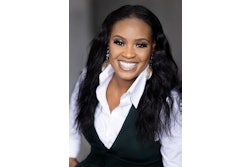In her 2013 book, What’s The Matter With White People: Why We Long For An Age That Never Was?, Joan Walsh, magazine writer for The Nation, provides a very powerful and convincing commentary that dispels long-held, misguided myths that many White Americans, particularly older baby boomers and others over 60 years old, harbor about pre-1960 America.
Walsh’s book was hotly debated in forums across the political spectrum. It seemed that many people either praised the book or were put off by the book’s central arguments. It is now apparent that Walsh, an MSNBC political analyst, was certainly on to something.
According to a recent study published by the Public Religion Research Institute, 72 percent of likely voters supporting Donald Trump, in particular White evangelical Protestants (74 percent), say that the nation has gotten progressively worse since the 1950s. On the contrary, 70 percent those who support Democratic nominee Hillary Clinton believe that things have gotten better since the mid-20th century. Unsurprisingly, such results fell heavily along racial lines. Fifty-six percent of Whites saw America as losing its luster over the past six decades, whereas 62 percent of Black Americans and 57 percent of Hispanic Americans see American society as having improved for the better.
Across the board, Democratic voters (which tend to be more racially diverse), were more likely to be more receptive to social justice issues, income inequality by 30 percent, race relations by 61 percent, supporting immigration efforts by 63 percent, and gender parity in politics by 77 percent. This was in stark contrast with Republican voters, whom concern about race relations was 29 percent, support for immigration was 27 percent, and gender equality in politics was 38 percent. Such numbers indicate a deep divide in the values, philosophies and attitudes of members of both parties.
Much of this sentiment has been aided and abetted by well-known demagogue Donald Trump, who blazed into the political scene last year with unprecedented fury and upended the political establishment. After defeating 16 other GOP candidates and winning his party’s nomination, he has radically disrupted and fractured the Republican Party.
Trump rallied onto the political scene with many aggressive, harsh, politically retrograde messages. Racism, sexism and xenophobia have been common fare throughout his odiously divisive candidacy. While there are multiple examples of irresponsible rhetoric that have emanated from Trump’s campaign, the most striking and pointed message has been his promise to “Make America Great Again.” While such a statement can mean varied things and have multiple meanings to many people, the message that Trump was espousing to his largely right-of-center, Tea Party, birther-obsessed crowd and, to many of us who are non-White, was an unambiguous, unapologetic return to a time when White people, in particular White men, were in control.
Indeed, Trump has fed very tasty T-bone steaks to more than a few White men (and some women for that matter) who long for the days when heterosexual, able-bodied White men ruled. Where Latino and other dark-skinned, non-White immigrants were largely non-existent. A world where Blacks and, in some cases, Jews, were occasionally seen, certainly not heard from, and deprived of any sense of dignity, fairness and equality. Women were largely relegated to second-class status, were of no competition in the workplace, had to often quietly overlook or turn a blind eye to infidelity or spousal abuse, and were largely relegated to objects of sexual objectification. Gays and lesbians were seen as less than human, regarded as deviants, perverts and unworthy of any form of respect. Disabled people were seen as quasi-human, burdensome and semi-tragic figures. Yes, for a sizable percentage of this segment of American society, these were indeed the “good ol’ days.”
The problem with such an analysis is that, as Walsh made clear in her book, such a reality never existed for a large number of Whites, in particular, the segment of disaffected Whites that are following and supporting Trump. Like their parents and grandparents of mid-20th century America, many of these White men and women were products of blue-collar families and communities that were subjected to economic deprivation and challenges, public schools that were subpar or adequate at best, class snobbery from their more upscale White brethren, lower life expectancy, etc. It short, they had a lot more in common with their Black and Hispanic cohorts than they realized. This is largely true today in 2016.
To be sure, Whites, even lower-income Whites, still occasionally benefit from White privilege. This is evident with the recent acquittal of seven militiamen who barricaded and armed themselves while seizing government property during a standoff in Oregon earlier this year, while similar treatment has not been afforded to a more racially diverse group of Native American protesters in North Dakota. Former Obama administration environmental czar and current CNN contributor Van Jones discussed the acquittal verdict with HBO Real Time host Bill Maher where he stated that minority protestors would have been sentenced to life in prison. He is largely correct, although I would argue that they might not have made it out of the compound alive. A bloodbath may have been the end result.
While a number of Trump supporters have gravitated toward him for economic reasons, it is clear that the vast majority have attached themselves to his campaign for racial, gender and other culturally oriented reasons. Next week’s election will demonstrate how many other people will follow suit to the voting booth.















